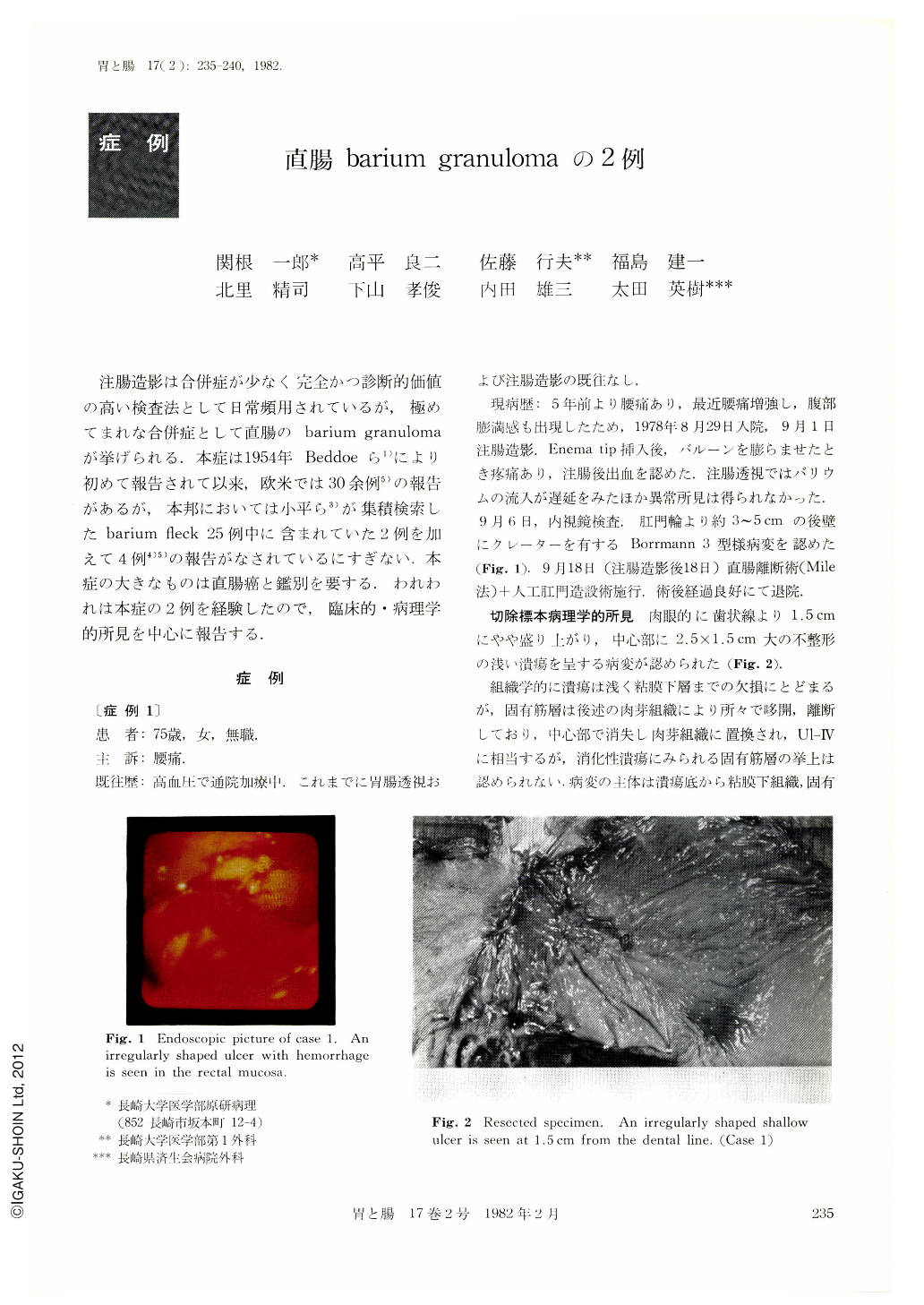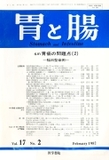Japanese
English
- 有料閲覧
- Abstract 文献概要
- 1ページ目 Look Inside
注腸造影は合併症が少なく完全かつ診断的価値の高い検査法として日常頻用されているが,極めてまれな合併症として直腸のbarium granulomaが挙げられる.本症は1954年Beddoeら1)により初めて報告されて以来,欧米では30余例5)の報告があるが,本邦においては小平ら3)が集積検索したbarium fleck25例中に含まれていた2例を加えて4例4)5)の報告がなされているにすぎない.本症の大きなものは直腸癌と鑑別を要する.われわれは本症の2例を経験したので,臨床的・病理学的所見を中心に報告する.
Barium granuloma of the rectum is one of the rare complications of the barium enema, which possibly results from laceration of the rectal mucosa by the enema tip. In Japan, only four previous cases have been reported to date. Two additional cases are reported here.
Case 1. A 75-year-old woman was admitted to the hospital, with complaint of lumbago, and took the barium enema using a balloon on September 1, 1978. The results of the barium enema were unsatisfactory, and after the barium enema the patient complained of blood discharge from the anus. On September 6, the endoscopy showed a Borrmann 3 type-like lesion in the rectum. On September 18, a resection of the rectum was performed. There was an irregularly shaped ulceration (2.5×1.5 cm) at 1.5 cm from the dental line. Histologically the accumulation of histiocytes accompanied with the foreign body type giant cells was seen through the total rectal wall, especially in the submucosa, which phagotized fine granular crystals, bright yellow green in colon (barium sulfate). The crystals were not stained with Kossa's method for calcium, Prussian blue stain for iron and Masson's silver method or melanin, and were doubly reflactile with polarized light. A chronic inflammatory reaction was seen, but it was mild. The accumulation of the barium was confirmed by the ultrasoft x-ray in the embedded specimen.
Case 2. A 64-year-old woman had not taken the barium enema. She took the barium erema on August 21 bacause of diarrhea and abdominal pain. On August 28, endoscopically a Borrmann 2 type-like lesion was seen in the rectum. On September 9, several biopsy specimens were taken and the lesion was diagnosed as barium granuloma. The roentgenograms of the abdomen taken on September 24 and on October 24 showed the residual barium in the rectal wall.
These two cases were thought to have developed the lesions after the first barium enema, and were histologically diagnosed at eighteenth day and twenty-first day after the barium enema, respectively.
It is important to keep the followings in mind so as not to take a barium granuloma for a carcinoma: (1) history of the barium enema, (2) confirmation of the residual barium in the rectal wall by the simple roentgenogram of the abdomen, and (3) histological proof of the barium by biopsy.

Copyright © 1982, Igaku-Shoin Ltd. All rights reserved.


